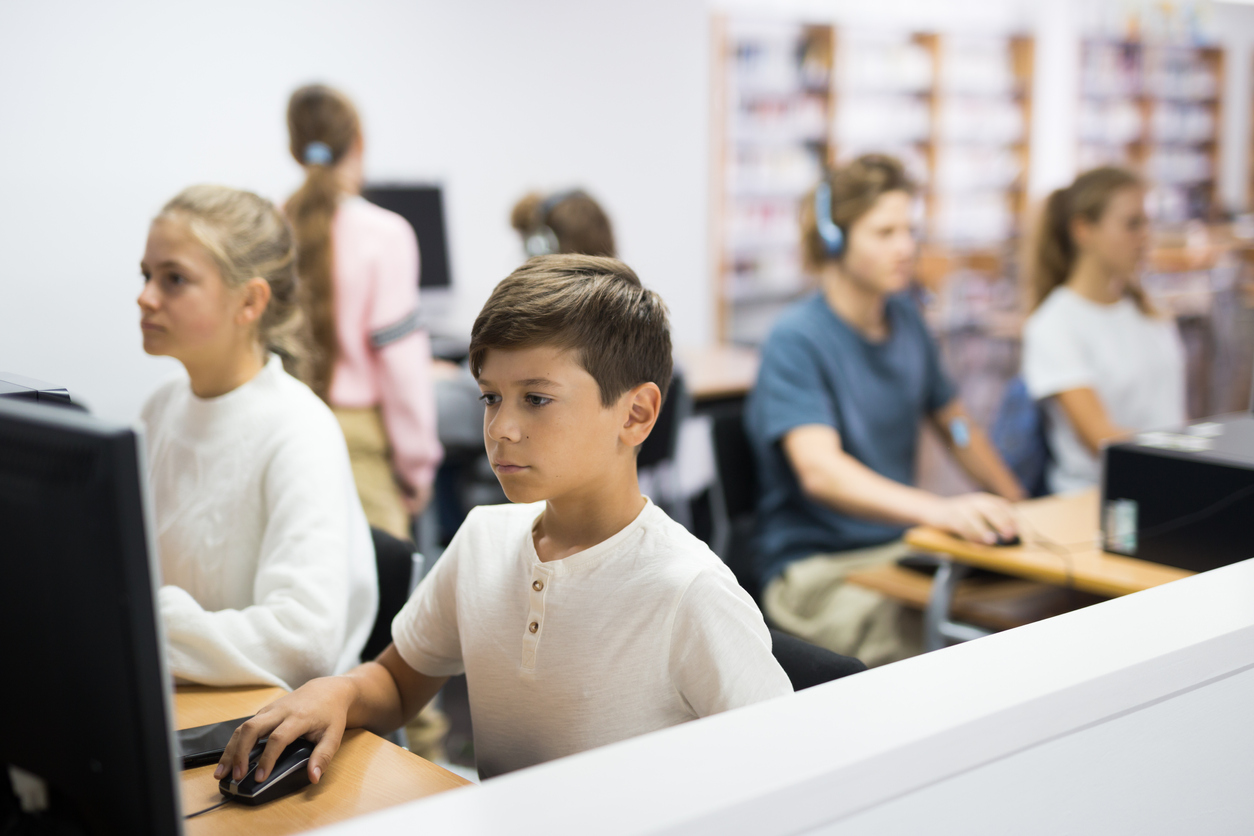There’s been a lot of conversation in recent years about the one-size-fits-all approach of the traditional public school system and why that isn’t the best choice for most students. In an effort to make learning more accessible for more students, many teachers are adopting learning stations (also called learning centers) in their classrooms. Learning stations are small areas set up around the classroom where small groups of students can work on different skills related to a topic that is currently being studied. Learning stations are great differentiated teaching tools because they help build so many different skills, including teamwork, responsibility, independent learning, critical thinking, and collaboration, to name a few. In this post, we’ll outline some steps teachers can take to create classroom learning stations that their students will love.
Create Learning Stations With Purpose
Don’t just set up random stations around the classroom with busy work…create learning stations that help students develop skills that they need to master actual curriculum topics. Take the current topic being studied by the class as a whole, break it down into easier-to-understand smaller parts, then focus each learning station on improving understanding of one of those parts. This lets each learning station activity build on the others, coming together to help students get a more firm grasp on the subject material. An error that many teachers make when creating learning station activities is to focus on the “sides” of the current lesson instead of the “meat”. This means that they create learning station activities that build understanding of concepts related to the current topic of study, but don’t address the parts of the topic of study itself. While it’s normal to want to help students make those connections in the margins, the true purpose of learning stations should be to reinforce main ideas. It’s also important to avoid topics that have not yet been studied by the class and instead only focus learning station activities on topics that have already been introduced. This will prevent confusion and frustration, which could cause a student to lose interest and stop working entirely.
Keep Learning Stations On-Topic
We touched on this in the last section, but it’s important enough to say twice – Only focus learning station activities on topics and concepts that are currently being studied by the whole class. Putting students into learning stations with activities from past or future lessons takes their minds out of the present, making it harder for them to stay focused on the current topic. Keeping learning stations on-topic may require frequently changing the station activities to suit the current topic of study, but being flexible is another important part of learning stations, as we’ll discuss below.
Keep Learning Stations Clean, Organized, & Well-Stocked
Children are quite adept at turning a clean, organized area into a mess, but once it is messy, they suddenly don’t want to play there anymore. Why is that? Whatever the reason, teachers need to take this fact of human nature into account when maintaining their learning stations. Define clear rules about how learning station resources should be used, including how to care for the station and keep it clean. However, teachers should never solely depend on students to keep learning stations neat and organized. At the end of day, teachers should go over each learning station, cleaning any items that need it and putting everything back in its proper place. This also gives the teacher an opportunity to restock any consumable items that were used up during the day and to replace broken or nonfunctional items. Keeping learning stations clean, organized, and well-stocked only takes a few minutes each day but can make a world of difference in how much students actually want to interact with the station activities.
Make Learning Stations Challenging & Flexible
Every class has students with different ability and readiness levels, and learning station activities should be adaptable enough to work with those varying ability levels while still challenging the students at each ability level. For example, if the class as a whole is studying sentence structure, the teacher may set up a learning station where students can identify the parts of a sentence and speech. For one group of students this activity may involve highlighting all the nouns in a certain passage, while for another group in the same class the activity may morph into identifying each part of speech in a single sentence. The activities should be planned so that switching from one activity level to another is quick, easy, and discreet. This makes learning station activities fun and challenging for everyone.
Switch Learning Stations Up Throughout the Year
As the topics being studied change throughout the year, the learning station activities will also need to change. But don’t just change up activity topics while still leaving the activity itself the same…students are going to get tired of doing word searches or manipulative work with every topic. Instead, change up the entire learning station activity to keep students interested and engaged. This is more work on the teacher, but the rewards in student learning are well worth the extra effort.
Use Prizes as Learning Station Incentives
A quality education is always the biggest prize a student can receive, but some fun toys never hurt either. Consider incentivizing students for learning station participation with rewards and prizes like no-homework days, extra recess time, school supplies, art supplies, novelty toys, and more. Students will always work a little harder when there’s a prize at the end!
Embrace Differentiated Learning With Learning Stations
Teachers are always looking for fun ways to engage students in the classroom, and learning stations are an amazing tool that does just that. By creating purposeful, on-topic learning stations that adjust to the current classroom topic of study, keeping those learning stations clean and organized, and incentivizing students for participating in learning station activities, teachers can add a whole new level of instruction to their classroom settings to really drill in key concepts and ensure students are understanding topics to their fullest ability.
GEDDES is an online school supply and novelty toy wholesale supplier that makes learning fun with prizes that students love. For learning stations, school stores, fundraisers, book fairs, and more, GEDDES has the products that keep students coming back for more!







